Transforming your living space into a reflection of your personality and lifestyle is an exciting journey, whether you’re just starting out or have spent years honing your design skills. As we look ahead to 2025, understanding the evolving trends in interior design can empower you to make thoughtful choices that will keep your home both stylish and functional.
Interior design is more than just aesthetics; it’s about creating environments that enhance our everyday lives. In this article, we’ll explore 11 smart design trends that promise to refresh your space and inspire creativity, blending the latest innovations with timeless principles.
From sustainable materials that honor the planet to technology-driven enhancements that simplify daily routines, these trends offer something for everyone. You’ll discover how to incorporate bold colors without overwhelming your space, and learn ways to make small changes that have a big impact. As you dive into these insights, you’ll find practical tips and inspiration tailored to fit any style and budget, ensuring your home remains a haven of comfort and joy.
Embracing Sustainable Materials

Incorporating sustainable materials into your home is not just a trend but a commitment to a more eco-friendly lifestyle. Start by choosing furniture made from reclaimed wood or bamboo, which are both stylish and sustainable options.
Natural fibers like organic cotton, hemp, and linen are excellent choices for upholstery and textiles. These materials not only reduce your environmental footprint but also bring a soft, inviting texture to your living spaces.
For a more advanced approach, consider using recycled metal or glass elements in your home decor. These materials can add a modern edge to your space, especially when used in accent furniture or decorative pieces like vases and wall art.
When selecting a color palette, opt for earthy tones like greens, browns, and beiges, which complement the natural materials and create a harmonious look. Pair these hues with natural textures to emphasize a connection to nature throughout your home.
To create a cohesive design, keep your furniture layout open and airy, allowing each sustainable piece to stand out. Use a mix of textures and finishes to add depth and interest without overwhelming the space.
Smart Home Technology Integration

Integrating smart home technology seamlessly into your interior design can significantly enhance both functionality and aesthetics. Start by selecting devices that complement your existing decor, such as voice-controlled light systems or sleek smart speakers, and position them in areas where they blend rather than disrupt the room’s flow.
Consider using neutral or matching color schemes for your tech devices to maintain a cohesive look in your space. For instance, opt for smart thermostats or security cameras in finishes like white, black, or metallics that align with your room’s color palette.
For beginners, focus on installing foundational tech like smart lighting, which not only adds convenience but also allows for creative lighting schemes that can transform a room’s ambiance. Place smart bulbs in strategic locations, such as behind furniture or in corners, to highlight architectural features or create mood lighting.
Advanced decorators can explore integrating smart home hubs within multifunctional furniture pieces, like coffee tables with built-in charging stations, to reduce clutter. This approach not only enhances your home’s efficiency but also maintains a clean, modern aesthetic.
Biophilic Design Elements
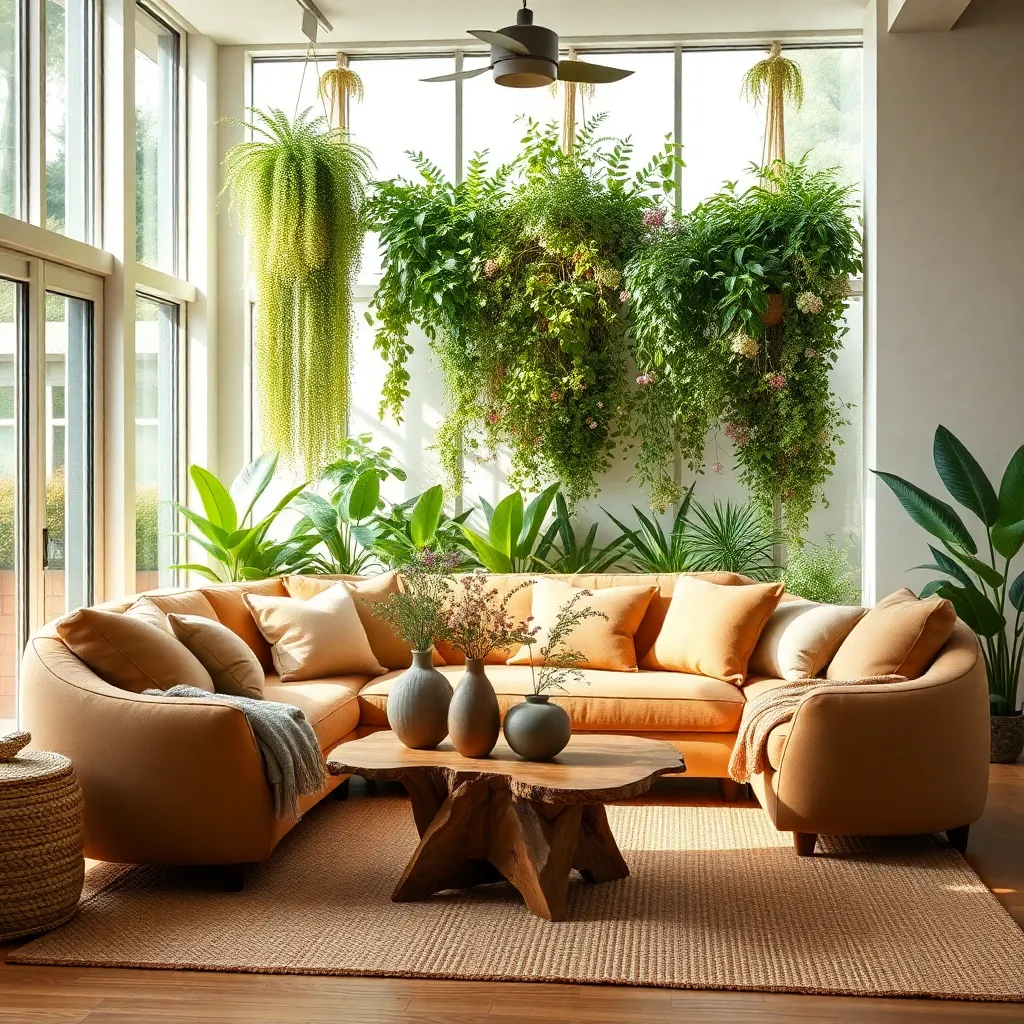
Biophilic design is all about integrating nature into your home, creating spaces that feel refreshing and nurturing. Start by incorporating natural materials such as wood, stone, and bamboo in your furniture and decor for an earthy feel.
Adding greenery is a simple yet effective way to embrace biophilic design. Consider placing potted plants on shelves or hanging them near windows to maximize natural light exposure, which is crucial for their growth and your wellbeing.
To enhance the connection with nature, use a color palette inspired by the outdoors. Opt for earth tones like soft greens, browns, and blues to evoke a sense of tranquility and balance in your living spaces.
For those looking to delve deeper into biophilic design, consider incorporating water features or natural light enhancements. Advanced decorators might explore skylights or water walls to further blur the lines between indoor and outdoor environments, creating a sanctuary within the home.
Maximizing Multifunctional Spaces
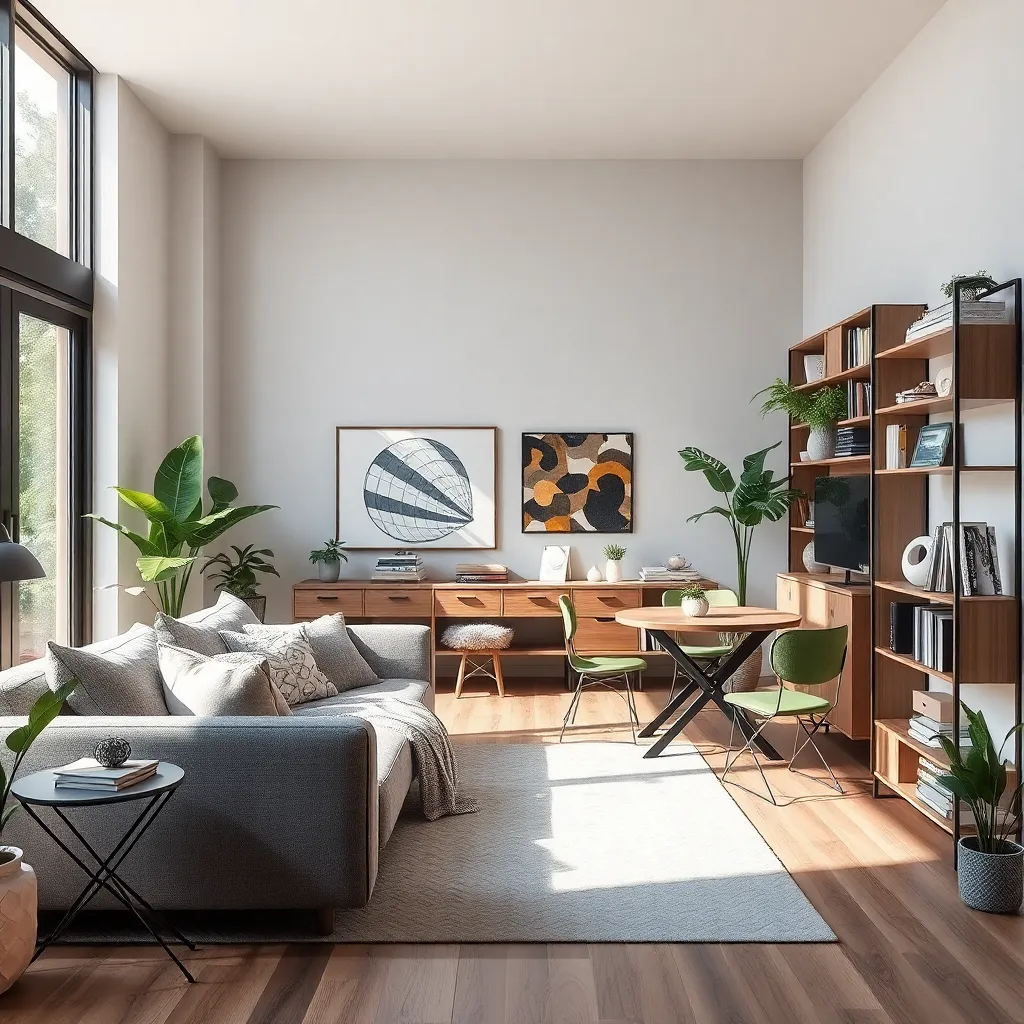
In modern homes, maximizing multifunctional spaces is essential to accommodate various activities within limited square footage. Start by choosing furniture pieces that serve dual purposes, such as a sofa bed or an extendable dining table, to effortlessly transition between different needs.
Consider using a neutral color palette with pops of vibrant hues to create a sense of openness while allowing for flexibility in decor. Light shades like soft grays and whites enhance natural light, making rooms feel more expansive and adaptable to changing functions.
To further optimize space, employ vertical storage solutions like tall bookcases or wall-mounted shelves. These not only free up floor space but also provide an organized spot for displaying decor or storing essentials without cluttering the room.
Advanced decorators might explore modular furniture, which can be reconfigured to suit different purposes—from a cozy workspace to an entertainment zone. Invest in quality materials such as solid wood or durable upholstery to ensure longevity and maintain a sophisticated look in your multifunctional area.
Curating Vintage and Modern Mix

Blending vintage and modern elements can create a unique and personalized space in your home. Start by selecting a few standout vintage pieces, such as an antique mirror or a mid-century chair, that can serve as focal points.
Incorporate modern furniture with sleek lines and neutral colors to balance these vintage elements. Opt for a neutral color palette for your walls and larger pieces to allow your vintage items to pop without overwhelming the space.
For those looking to experiment further, consider using vintage textiles like Persian rugs or embroidered cushions to add texture and warmth. Pair these with contemporary lighting fixtures, such as a geometric pendant or minimalist floor lamp, to bring in a modern edge.
Advanced decorators might explore mixing materials, such as a reclaimed wood coffee table paired with a modern glass vase. This combination can add depth and interest, making your space feel both curated and cohesive.
Color Palettes: Bold and Neutral
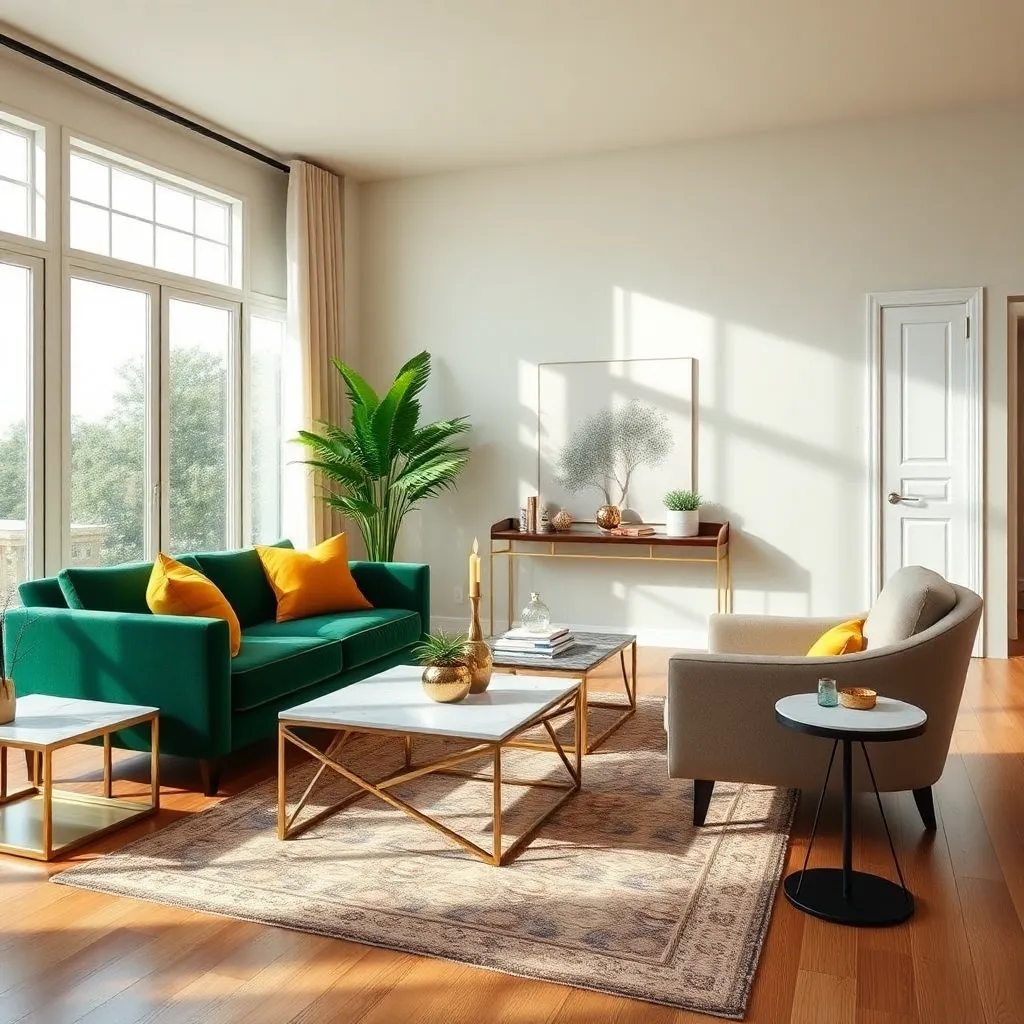
Embracing a color palette that combines bold and neutral tones can transform any space into a dynamic yet harmonious environment. Start by choosing a neutral base, like soft greys or beiges, which provides a calming backdrop for more vibrant hues.
Introduce bold accents through accessories and focal pieces to add depth and interest. Consider using rich jewel tones such as emerald green or sapphire blue in cushions, throws, or artwork to create a striking contrast with the neutral base.
For those looking to make a more daring statement, paint an accent wall in a bold color to instantly energize a room. Pair this with neutral furniture to maintain balance, ensuring the bold color doesn’t overwhelm the space.
Advanced decorators might explore layering different textures alongside color for added dimension. Incorporating materials such as velvet, leather, and natural wood can enhance the visual appeal and tactile experience of the room, making it both stylish and inviting.
Textural Layering for Depth
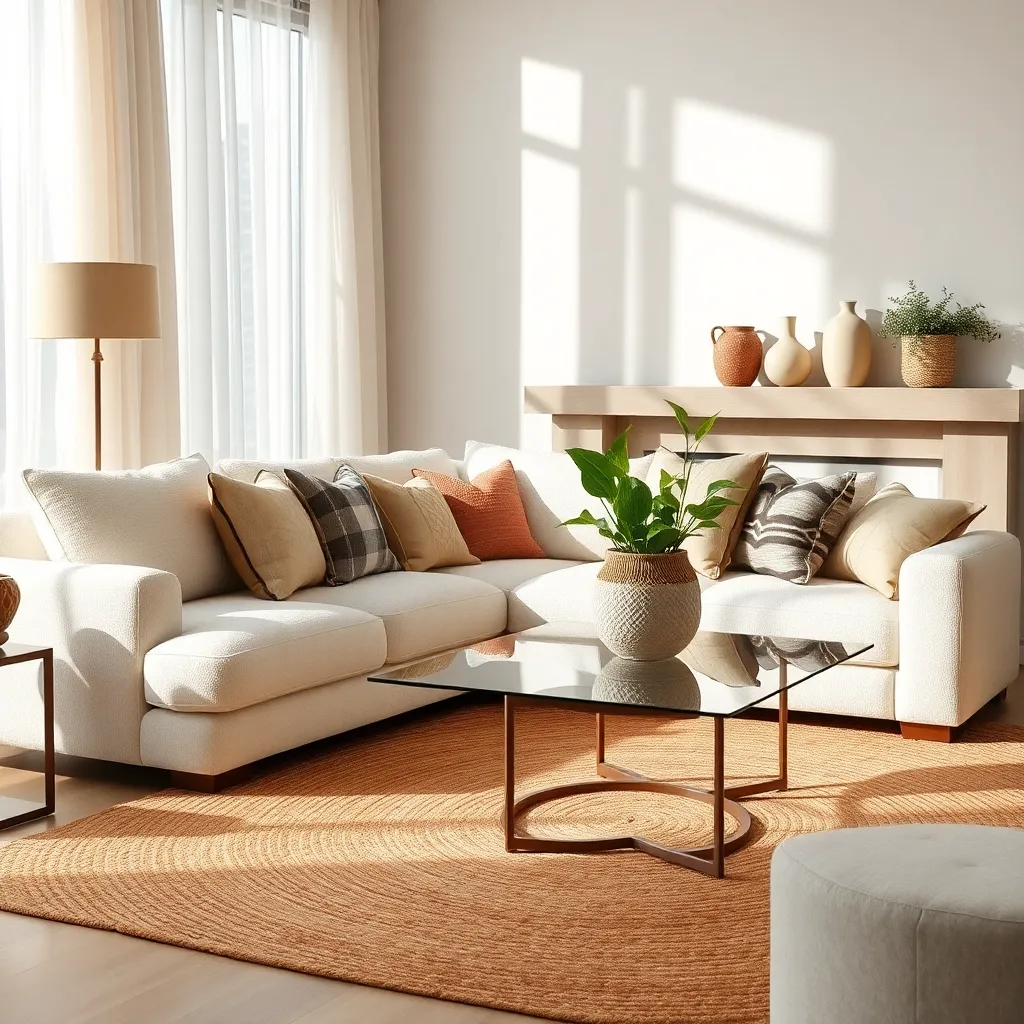
Bring depth to your interiors by incorporating textural layering, which adds a rich, tactile dimension to any room. Start by selecting a variety of materials such as velvet, linen, and woven textiles to create contrast and interest.
Introduce these textures through furniture pieces like a plush velvet sofa paired with a jute rug to balance softness and ruggedness. For a more advanced approach, mix in metallic accents or glass elements to reflect light and add a touch of sophistication.
Adding textiles in layers can transform a space from flat to dynamic; consider using layered window treatments like sheer curtains under heavier drapes. This not only enhances privacy but also allows you to control light levels effortlessly.
For those looking to experiment further, consider layering different paint finishes on walls, such as a matte base with a glossy stencil design. This technique creates a subtle yet impactful visual interest that draws the eye and enriches the overall ambiance.
Architectural Lighting Innovations
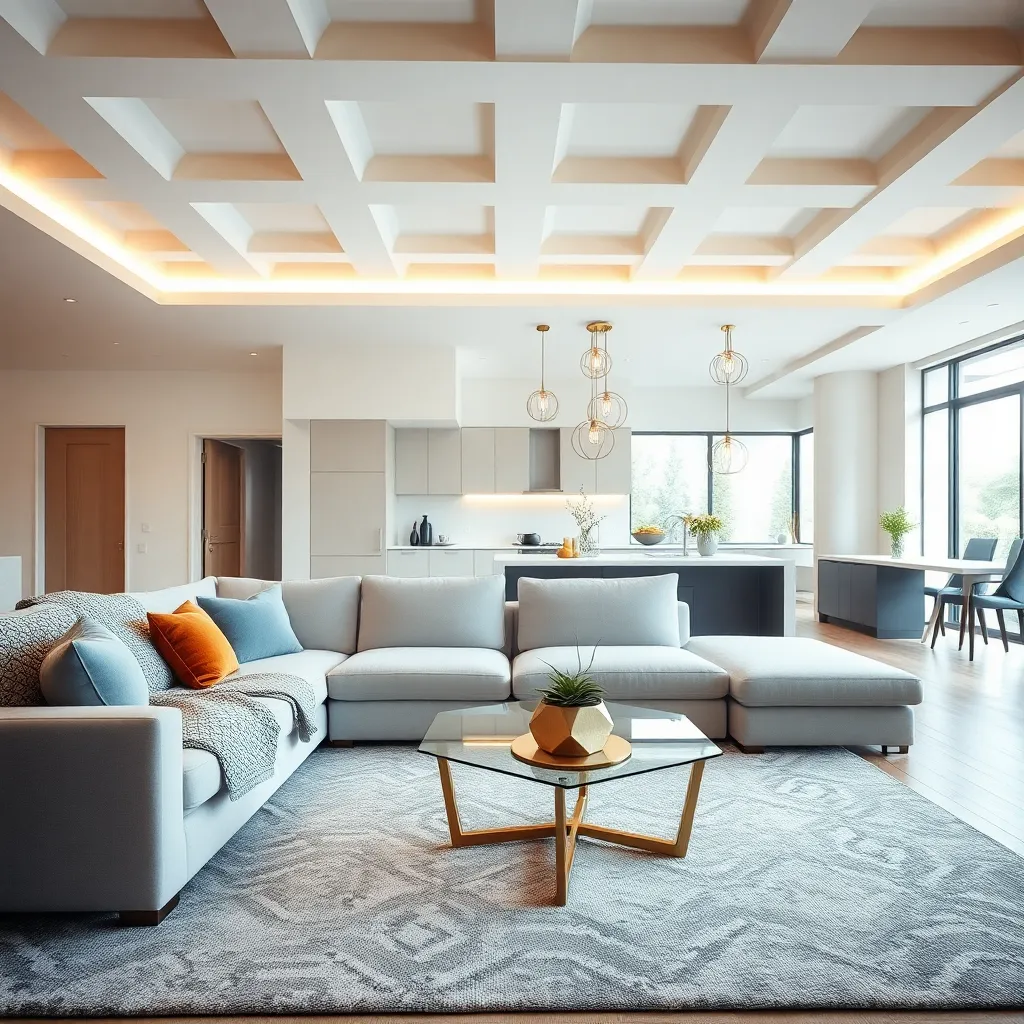
One of the most exciting trends in home design for 2025 is the integration of architectural lighting innovations to enhance both form and function. To achieve this, consider installing recessed lighting along the perimeter of your ceilings, which can create a soft, ambient glow that makes spaces feel more expansive and inviting.
For those just starting out, it’s vital to understand that lighting affects mood and perception. Begin by layering your lighting with a combination of overhead fixtures, task lighting, and accent lights to provide flexibility and depth.
Advanced decorators might explore the use of smart lighting systems that allow for customizable settings, making it easy to adjust the brightness and color temperature depending on the time of day or occasion. These systems can be controlled via smartphone apps or voice-activated assistants, offering both convenience and energy efficiency.
Incorporating LED strip lights beneath cabinets or along staircases can add a modern touch and improve visibility in these areas. For a unique design statement, consider pendant lights with geometric shapes or metallic finishes to add a focal point in living or dining areas.
Indoor-Outdoor Living Fusion
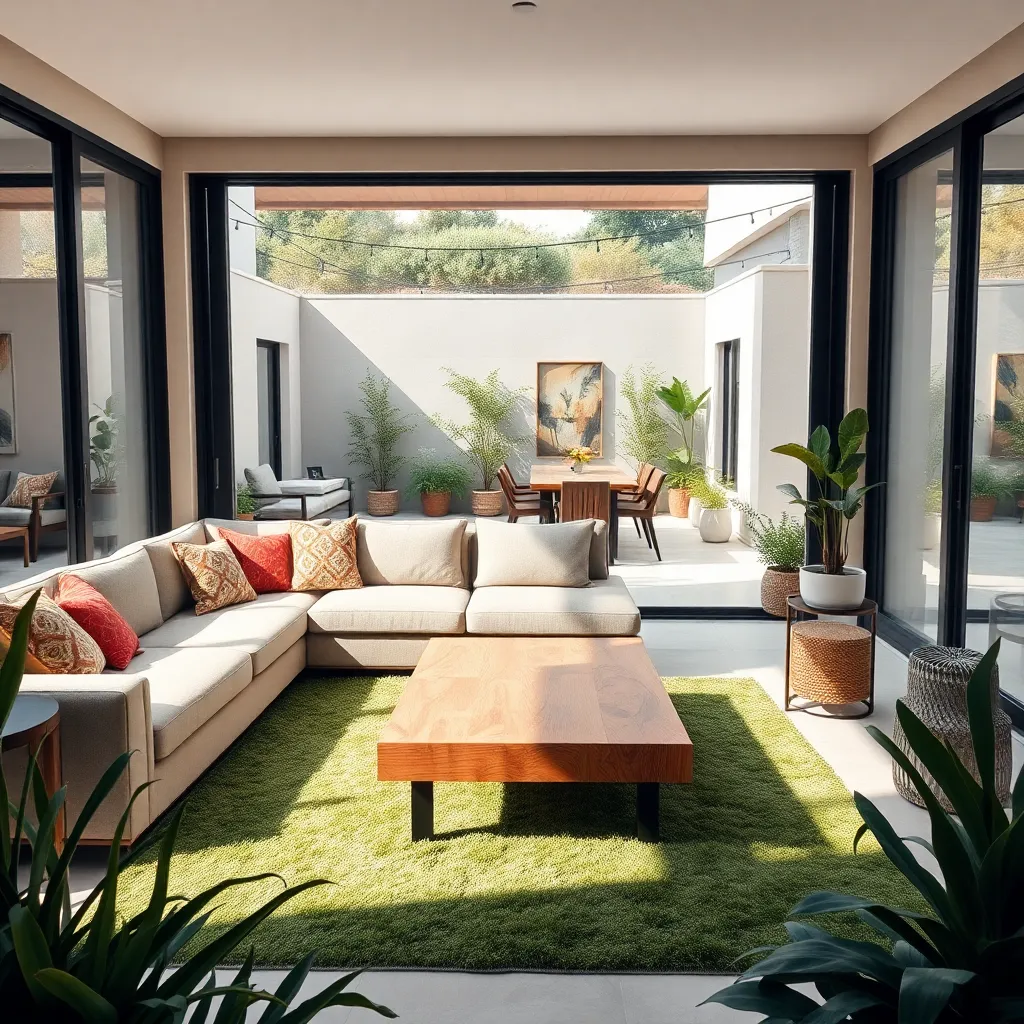
Blurring the lines between indoor and outdoor spaces is a trend that continues to gain momentum, inviting nature into our homes. One effective approach is to incorporate large windows or glass doors, which not only bring in natural light but also provide seamless transitions to outdoor areas.
To create an inviting indoor-outdoor space, consider using weather-resistant furniture that can be easily moved between environments. Opt for materials like teak or powder-coated metals, which are durable and stylish for both settings.
Incorporate a cohesive color scheme to enhance the fusion of these spaces, using earthy tones such as sage green, terracotta, and soft browns. These colors naturally connect indoor spaces with the outdoors, creating a harmonious flow that feels both relaxing and stylish.
For advanced decorators, integrating smart, retractable screens can provide flexibility, controlling pests while maintaining the open feel. This allows you to enjoy fresh air and outdoor views without compromising comfort or aesthetics.
Customized Artisanal Accents
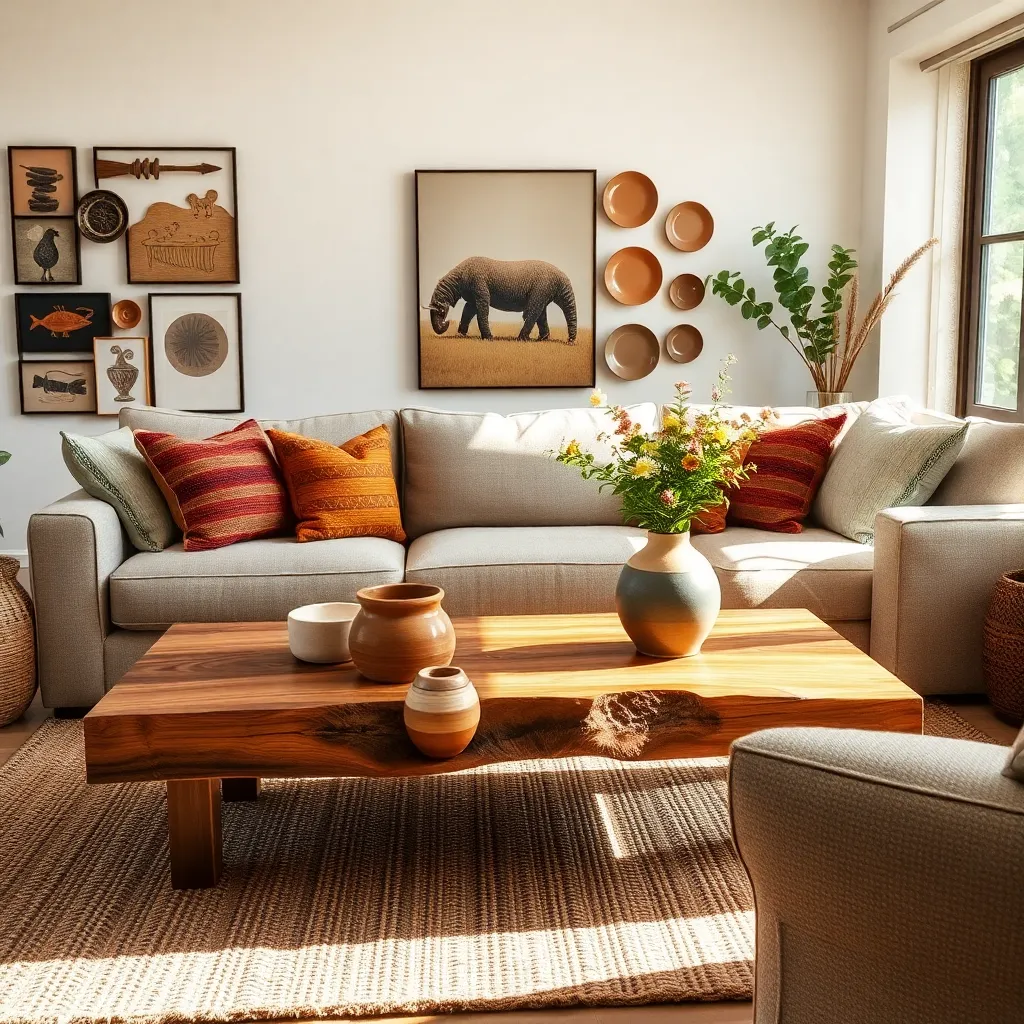
Adding customized artisanal accents to your home can infuse personality and uniqueness into your space. Consider sourcing items like handcrafted pottery, woven textiles, or bespoke lighting fixtures that reflect your personal style and the character of your home.
Start with small, impactful pieces that can easily be swapped out as trends evolve. For example, incorporate a beautifully crafted wooden bowl as a centerpiece on your dining table or choose a hand-painted vase for your mantelpiece.
For those looking to make a bold statement, consider investing in a custom piece of furniture such as a hand-carved coffee table or a locally crafted headboard. These pieces not only serve as conversation starters but also contribute to a more personalized and inviting space.
When selecting materials, look for sustainable options like reclaimed wood or organic textiles to enhance the eco-friendliness of your decor. Pair these materials with a neutral color palette to allow the craftsmanship to take center stage, ensuring the artisanal accents remain the focal point of your design.
Wellness-Centric Design Approaches
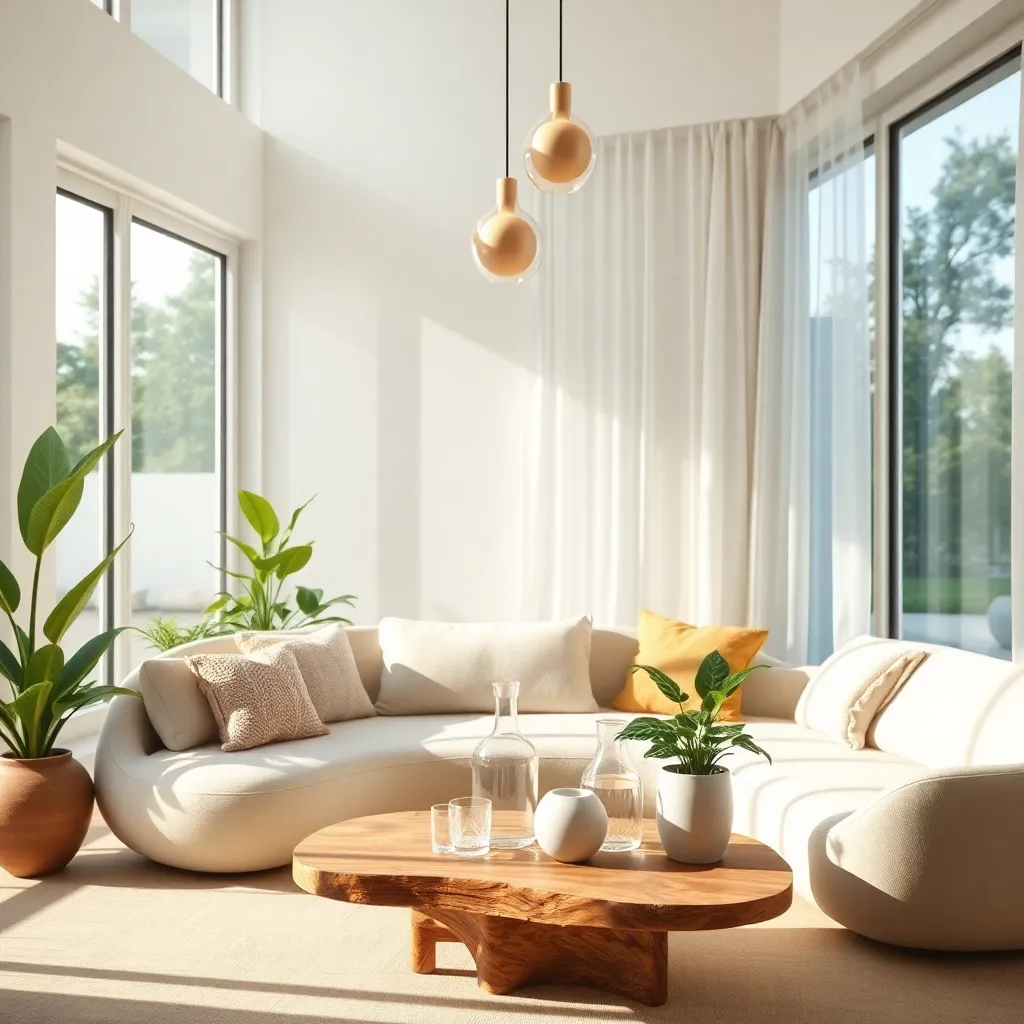
Creating a wellness-centric home begins with choosing calming color palettes that promote relaxation and peace. Opt for soft hues like muted greens, pale blues, or warm neutrals, which are known to have a soothing effect on the mind and body.
Incorporating natural elements can significantly enhance the wellness aspect of your home. Consider adding indoor plants, which not only purify the air but also introduce a sense of tranquility and connection to nature.
Furniture selection plays a crucial role in fostering a wellness-friendly environment. Choose ergonomic furniture that supports comfort and well-being, such as a chair with lumbar support or a bed with a high-quality mattress.
To create a space that encourages mindfulness, declutter areas and embrace minimalism. Use smart storage solutions like multifunctional furniture to keep spaces tidy and organized, thereby reducing stress and enhancing focus.
Conclusion: Growing Success with These Plants
As we step into 2025, these 11 smart interior design trends offer more than just aesthetic upgrades—they are catalysts for nurturing and strengthening your relationships. From creating open, welcoming spaces that encourage communication to incorporating personalized touches that celebrate your unique journey together, each trend is a step towards deeper connection. Embracing sustainable and multi-functional designs fosters a shared commitment to future-proof your home and relationship, while cozy, intimate nooks provide the perfect retreat for meaningful interactions. Integrating technology thoughtfully can enhance convenience and entertainment, enriching your shared experiences.
To bring these concepts into your life, start by choosing one trend that resonates with your relationship goals and take actionable steps to implement it today. Perhaps it’s reimagining a shared space or introducing elements that reflect your mutual aspirations.
Remember, relationships thrive in environments that reflect love, understanding, and growth. Bookmark this article to revisit these ideas whenever you need inspiration. As you infuse your living space with these thoughtful designs, you set the stage for a thriving relationship that will evolve beautifully in the years to come. Here’s to creating a home—and a relationship—that is both a sanctuary and a springboard for future success.
